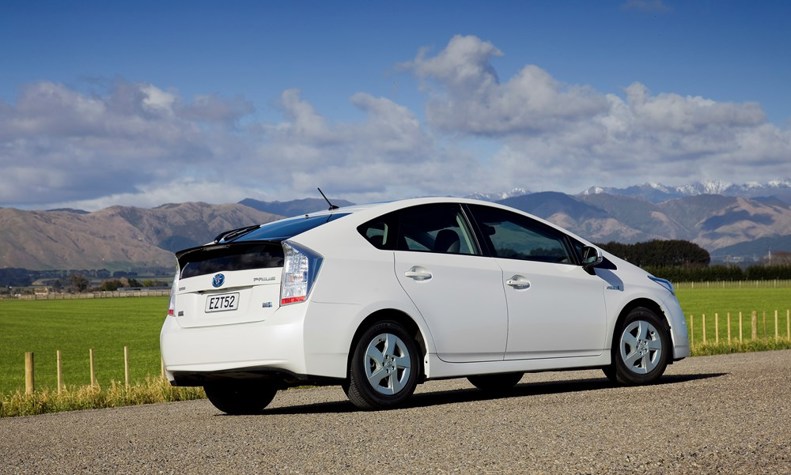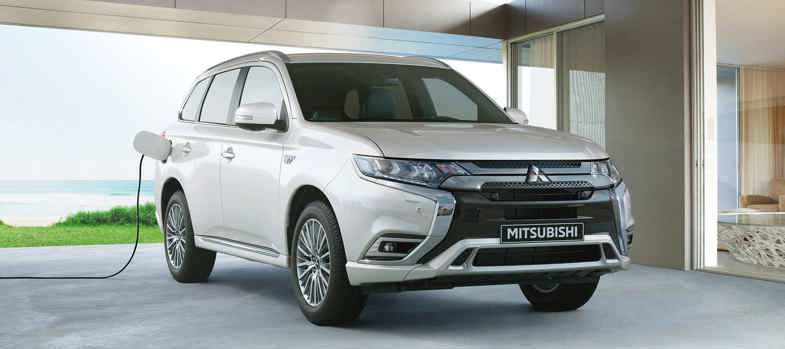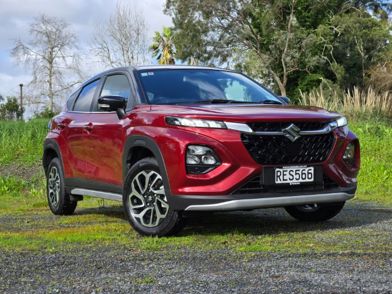As the automotive industry continues its shift towards more sustainable energy sources, different types of hybrid vehicles have emerged to offer varying degrees of electric assistance. Mild-hybrid, hybrid, and plug-in hybrid cars each have distinct characteristics that cater to different driving needs and preferences. Here’s a look at these three types of vehicles, their functionalities, and how they differ from each other.
Mild-hybrid vehicles
 The last-gen Suzuki Swift introduced the mild hybrid powertrain. The new one is entirely MHEV.
The last-gen Suzuki Swift introduced the mild hybrid powertrain. The new one is entirely MHEV.Mild-hybrid electric vehicles (MHEVs) combine a traditional internal combustion engine (ICE) with a small battery and electric motor. However, unlike full hybrids, the electric motor in an MHEV cannot power the vehicle on its own. Instead, it provides assistance to the ICE to improve efficiency and performance.
Key features:
- Electric assist: The electric motor supports the ICE during acceleration, reducing the engine's workload and improving fuel economy.
- Regenerative braking: Energy that would otherwise be lost during braking is captured and stored in a small battery.
- Stop-start system: The engine shuts off when the car is idling and quickly restarts when needed, reducing fuel consumption.
Advantages:
- Improved fuel efficiency: Though not as efficient as full hybrids, MHEVs offer better fuel economy compared to conventional ICE vehicles.
- Lower emissions: Reduced reliance on the ICE leads to lower emissions.
- Cost-effective: MHEVs are generally less expensive than full hybrids and plug-in hybrids due to simpler technology and smaller batteries.
Hybrid vehicles

Hybrid electric vehicles (HEVs) utilise both an internal combustion engine and one or more electric motors. The key difference from mild-hybrids is that HEVs can run on electric power alone, mostly for short distances and at low speeds, but an increasing number will "sail" (shut off the ICE and maintain speed using the electric motor) at open road speeds
Key features:
- Dual power sources: HEVs can seamlessly switch between the ICE, the electric motor, or a combination of both.
- Regenerative braking: Similar to MHEVs, HEVs capture energy during braking to recharge the battery.
- Self-charging: The battery is charged through regenerative braking and by the ICE, eliminating the need for external charging.
Advantages:
- Higher fuel efficiency: HEVs offer significant fuel savings compared to conventional vehicles and MHEVs, especially in stop-and-go traffic.
- Reduced emissions: By using electric power more frequently, HEVs produce fewer emissions.
- No need for plug-in charging: The "self-charging" capability means there's no dependency on external charging infrastructure to charge the battery.
Plug-in hybrid vehicles

Plug-in hybrid electric vehicles (PHEVs) are similar to HEVs but come with a larger battery that can be recharged by plugging into an external power source. This allows PHEVs to travel longer distances on electric power alone compared to standard hybrids.
Key Features:
- Extended electric range: PHEVs can run on electric power for extended distances, typically between 50 to 100 kilometres, before switching to the ICE.
- Dual charging methods: PHEVs can be charged through regenerative braking, the ICE, and external power sources like public fast chargers and household three-pin sockets.
- Versatile performance: The combination of electric and ICE power provides flexibility for both short electric trips and long-distance drives.
Advantages:
- Greater fuel savings: For short commutes, PHEVs can operate entirely on electric power, resulting in significant fuel savings.
- Lower emissions: PHEVs produce fewer emissions, especially when driven mostly on electric power.
- Flexibility: The ability to switch to the ICE for longer journeys alleviates range anxiety associated with pure electric vehicles (EVs).
Comparison and suitability
- Cost: MHEVs are generally the most affordable, followed by HEVs, with PHEVs usually being the most expensive due to their larger batteries and more complex technology.
- Fuel efficiency: PHEVs offer the highest potential fuel savings, especially for drivers who can frequently recharge and drive short distances. HEVs provide a good balance of fuel economy and convenience, while MHEVs offer moderate savings over traditional ICE vehicles.
- Emissions: PHEVs have the lowest emissions when driven predominantly in electric mode, followed by HEVs and then MHEVs.
- Convenience: HEVs and MHEVs are more convenient for those without access to regular charging facilities, as they do not rely on external power sources. PHEVs require access to charging stations or regular charging at home or work to maximise their benefits.
Conclusion
Choosing between a mild-hybrid, hybrid, or plug-in hybrid vehicle depends on individual driving habits, environmental considerations, and budget. Mild-hybrids offer a cost-effective entry into the world of electric-assisted driving, hybrids provide a balanced approach with significant fuel savings and reduced emissions, while plug-in hybrids deliver the best of both worlds for those who have access to charging infrastructure and want to minimise their reliance on fossil fuels. As technology advances, these vehicles represent important steps towards a more sustainable automotive future.







